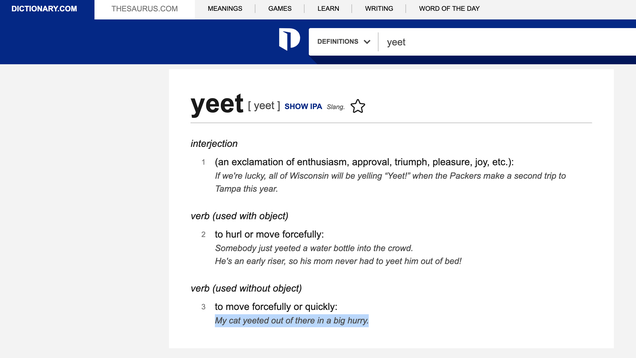Rsync is a Linux-based tool that can be used to sync files between remote and local servers. Rsync has many options that can help you define the connections you make. From deciding the type of shell that should be used to files that should be excluded in a transfer, Rsync gives you the power to shape the transfer specifications. In the following tutorial, we will run by some of the most common examples of using Rsync.
Source: LXer – Rsync (Remote Sync): Practical Examples of Rsync
Monthly Archives: July 2021
Exploding Stars May Have Assaulted Ancient Earth
sciencehabit shares a report from Science Magazine: Over the past 2 decades, researchers have found hundreds of radioactive atoms, trapped in seafloor minerals, that came from an ancient supernova explosion marking the death of a nearby star. Erupting from hundreds of light-years away, the flash of x-rays and gamma rays probably did no harm on Earth. But the expanding fireball also accelerated cosmic rays — mostly nuclei of hydrogen and helium — to close to the speed of light. These projectiles arrived stealthily, decades later, ramping up into an invisible fusillade that could have lasted for thousands of years and might have affected the atmosphere — and life. In a flurry of studies and speculation, astronomers have sketched out their potential effects, including a depleted ozone layer, cancer-causing particles, wildfires, and a cooling of the climate that could have helped initiate the ice ages 2.5 million years ago. Most paleontologists are yet to be convinced, but astronomers argue that such supernovae could explain some extinction events that lack customary triggers like volcanic outbursts or asteroid impacts.
Read more of this story at Slashdot.
Source: Slashdot – Exploding Stars May Have Assaulted Ancient Earth
Linux Foundation starts open-source diversity, equity, and inclusion survey
Just how “white and male” is the open-source community? How open is “open source” really? You can help the Linux Foundation find out.
Source: LXer – Linux Foundation starts open-source diversity, equity, and inclusion survey
Compact Tiger Lake module features soldered RAM
Congatec’s Linux-friendly “Conga-TC570r” Compact Type 6 module supplies Intel’s 11th Gen Core CPUs with up to 32GB soldered LPDDR4x, quad independent displays, PCIe Gen4, 2.5GbE, 4x USB 3.1 Gen2, and -40 to 85°C support. Last September, Congatec announced its Conga-TC570 COM Express Basic Type 6 module along with a Conga-HPC/cTLU COM-HPC module that similarly runs […]
Source: LXer – Compact Tiger Lake module features soldered RAM
Raspberry Pi add-on enables 120fps 3D sensing via an IR laser
Magik Eye has launched a developer release of an “ILT Development Kit” (DK-ILT001) add-on for the Raspberry Pi that provides 3D sensing at up to 120fps by combining inputs from a CMOS sensor and a 3D IR laser. Stamford, Conn. based Magik Eye announced a “pre-launch” release of its Invertible Light Technology (ILT) Development Kit […]
Source: LXer – Raspberry Pi add-on enables 120fps 3D sensing via an IR laser
Amazon convinces Apple to remove review analyzer Fakespot from the App Store
Fakespot, an app that analyzes Amazon reviews to determine which ones are fake, is no longer available for iOS. Amazon has successfully convinced Apple to remove it from the App Store after the company raised concerns that the application provides misleading information and creates potential security vulnerabilities. The e-commerce giant has confirmed to Engadget that it reported Fakespot for investigation. One of its biggest concerns, Amazon told us, was that the redesigned app Fakespot launched in June “wraps” and injects code into its website.
“Wrapping” would make it possible, in theory, for the app to collect data and put customers’ sensitive information, including credit card numbers, at risk. The e-commerce titan told us it got in touch with Fakespot directly to address its security concerns and that the app developer didn’t take action.
Amazon said in a statement:
“Amazon works hard to build a shopping experience that delights customers, and a selling experience that empowers brands and sellers to build and grow their business. The app in question provides customers with misleading information about our sellers and their products, harms our sellers’ businesses, and creates potential security risks. We appreciate Apple’s review of this app against its Appstore guidelines.”
Fakespot founder and CEO Saoud Khalifah has admitted to CNBC that his company collects some user data, but he said that it doesn’t sell information to third parties. Further, he denies Amazon’s claim that the app presents security risks. “We don’t steal users’ information, we’ve never done that. They’ve shown zero proof and Apple acted on this with zero proof,” he told the publication. Apparently, Apple didn’t give his company adequate warning before the app was taken down and didn’t even give it a chance to rectify any issue the tech giant may have.
While Apple has yet to issue a statement that would clarify why exactly Fakespot was pulled down, Amazon pointed Engadget to two App Store guidelines, in particular. One of those guidelines states that an app that displays content from a third-party service must secure permission from that service. The other prohibits applications from displaying false information.
Back in early 2020, Amazon went after another add-on used to track prices and discount: Honey, a $4 billion PayPal acquisition. People using Honey saw a warning on Amazon’s website that said the extension “tracks [their] private shopping behavior, collects data like [their] order history and items saved, and can read or change any of [their] data on any website [they] visit.”
Source: Engadget – Amazon convinces Apple to remove review analyzer Fakespot from the App Store
Sea Walls Might Just Make Floods Someone Else's Problem, Study Suggests
An anonymous reader writes: Protecting the coasts in the United States from the impacts of climate change comes with a hefty price tag. But new research shows that using sea walls to safeguard land can just make the rising tides a problem somewhere else. The paper, published in PNAS, looks into the effect of erecting sea walls in one location and what that means for other places along the coast. Using the San Francisco Bay as a case study, it also assesses the economic impacts of flood scenarios in the nonprotected regions. According to the paper, defending individual parcels of the shore can increase flooding elsewhere by as much as 36 million cubic meters. This can result in $723 million in damages for a single flooding event in the most dire situations — costs can even exceed the damages that would have resulted otherwise in the protected region.
Robert Griffin, an assistant professor at the University of Massachusetts, Dartmouth’s School of Marine Science and Technology, decided to look into what happens to unprotected areas. Griffin and his team combined hydrodynamic and economic modeling to investigate flood damages in the San Francisco Bay under a variety of different scenarios — with different parts of the shore protected by walls with different lengths, for instance. (For the sake of the experiment, the sea walls were modeled as being infinitely high.) The team focused on problems brought on by tidal events, rather than storms, and broke the results down by amount of sea-level rise: 50 cm, 100 cm, 150 cm, and 200 cm above 2010 levels. The study “can be useful in a variety of outcomes through time,” Griffin told Ars, adding that the 200 cm scenario is close to the high end of current projections for the year 2100. “Displacement effects relate to the morphology of the land. Places that are low-lying, and valleys, can potentially accommodate more water in a tidal flooding scenario. If you block those places in the case of a flood, those waters go elsewhere. If those other places aren’t also similarly defended, then it can increase the damages on those places,” Griffin said.
For example, if you protect the Napa-Sonoma shoreline, the Santa Clara Valley and San Leandro in the South Bay can expect to experience $82 million and $70 million in flooding damages, respectively, with a sea-level rise of 200 cm. San Rafael would also be hit with an additional $53 million in damages in the case of a flood. On the positive side of things, protecting parts of the South Bay could lead to small but widespread damage reductions. Protecting Alameda, for instance, could reduce flood damages in areas south of there, including San Lorenzo and Newark. It would also cut down damages on the opposite side of the shoreline, near Palo Alto and Silicon Valley, the paper notes. Though the modeling done in this research focuses on the San Francisco Bay, Griffin noted that other parts of the world’s coasts could see similar effects. Further, around 468 million people live close to bays and estuaries, according to the paper. Considering sea walls are already in place along many coasts, these displaced damages could already be happening — though potentially to a lesser extent than if the sea level reached the paper’s more dire levels.
Read more of this story at Slashdot.
Source: Slashdot – Sea Walls Might Just Make Floods Someone Else’s Problem, Study Suggests
How To Add Fonts In Fedora Linux
This brief guide explains two different ways to install and add fonts in Fedora Linux distribution.
Source: LXer – How To Add Fonts In Fedora Linux
Feds: California Men Discussed 'Terrorist' Attacks on Twitter and Facebook, Other Targets

Two California men have been indicted in connection with an apparent plot to attack the state’s Democratic Party headquarters, located in Sacramento, the Justice Department said Friday. The men also discussed attacks at other locations throughout the state that they “associated with Democrats,” including the…
Source: Gizmodo – Feds: California Men Discussed ‘Terrorist’ Attacks on Twitter and Facebook, Other Targets
Physicists Move Closer To Defeating Errors In Quantum Computation
sciencehabit shares a report from Science Magazine: Physicists at Google have taken an important step toward protecting delicate information in their nascent quantum computer from errors that can obliterate it. The researchers can’t yet compensate for all types of errors — a necessary step toward building a full-fledged quantum computer — but others say they’re poised to achieve that goal. Working with chains of up to 11 data qubits, Google researchers have now been able to preserve a logical qubit for a time that increases exponentially with the number of physical qubits, they report today in Nature. By spreading a single qubit’s state over up to 11 data qubits, they reduced the chances of an error after 50 microseconds from 40% to 0.2%. Other groups have demonstrated similar error corrections schemes, but the new work is the first to demonstrate the exponential suppression of errors, says Julian Kelly, a physicist at Google and senior author on the paper. Such exponential suppression suggests developers may eventually be able to maintain a logical qubit indefinitely by spreading it over about 1000 physical qubits.
Read more of this story at Slashdot.
Source: Slashdot – Physicists Move Closer To Defeating Errors In Quantum Computation
Router board features WiFi 6 and five GbE ports
Wallys’ “DR5018” router board is equipped with a Qualcomm IPQ5018 with dual Cortex-A53 cores and offers 5x GbE (or 1x GbE and 1x 2.5GbE) plus 802.11ax, BT 5.1, USB 3.0, and 2x M.2 E-key slots. Wallys (or Wally’s) Communications has announced another Linux-driven router board based on a Qualcomm reference design. The new DR5018 incorporates […]
Source: LXer – Router board features WiFi 6 and five GbE ports
Olds, Now You Can Look Up 'Yeet' in the Dictionary Instead of Asking the Youth

While I have not considered myself part of the Youth for quite a few years now, I did not yet feel like I was an Old—until today, when I found out that Dictionary.com had added the word “yeet” to its repertoire. Even Microsoft Word doesn’t know what “yeet” means, as it keeps correcting it to “yet” and drawing an angry…
Source: Gizmodo – Olds, Now You Can Look Up ‘Yeet’ in the Dictionary Instead of Asking the Youth
Wisdom Tree – A Focus And Productivity App For Linux
This brief guide explains how to improve mental focus and concentration with the Wisdom Tree focus and productivity app in Linux.
The post Wisdom Tree – A Focus And Productivity App For Linux appeared first on Linux Today.
Source: Linux Today – Wisdom Tree – A Focus And Productivity App For Linux
Generate a SSH Key Pair: How to Do it (with Examples)
SSH keys are an easy way to identify trusted computers, without involving passwords. Learn how to generate a SSH key pair on your own machine that can then be used to authenticate your connection to a remote server.
Source: LXer – Generate a SSH Key Pair: How to Do it (with Examples)
Walking Dead Lawsuit Ends in $200 Million Settlement

Frank Darabont, the Oscar-nominated filmmaker behind The Shawshank Redemption, was a key figure in bringing The Walking Dead to AMC way back in 2010. A few years later though, the showrunner and executive producer realized he wasn’t be compensated properly for his stake in the show, and a lawsuit was filed.
Source: Gizmodo – Walking Dead Lawsuit Ends in 0 Million Settlement
Google Maps Accused of Offering 'Potentially Fatal' Hiking Routes
Hikers looking to summit Scotland’s highest mountain and other peaks in the area are being sent up “potentially fatal” routes by Google Maps, the region’s mountaineering organizations have warned. CNN reports: The John Muir Trust said Thursday that growing numbers of people using Google Maps to navigate up Ben Nevis risk being directed via a route that is “highly dangerous, even for experienced climbers.” Ben Nevis, a popular tourist destination, is the highest mountain in the British Isles, standing at 1,345 meters (4,413 feet). Although thousands summit it annually, climbing the peak is not without risks and deaths have been recorded on the mountain as recently as this year. “The problem is that Google Maps directs some visitors to the Upper Falls car park, presumably because it is the closest car park to the summit,” John Muir Trust’s Nevis Conservation Officer Nathan Berrie said in a statement. “But this is NOT the correct route and we often come across groups of inexperienced walkers heading towards Steall Falls or up the south slopes of Ben Nevis believing it is the route to the summit,” Berrie added. Mountaineering Scotland also warned that a route suggested by Google Maps was “potentially fatal.”
“For those new to hill walking, it would seem perfectly logical to check out Google Maps for information on how to get to your chosen mountain,” Heather Morning, Mountaineering Scotland’s mountain safety adviser explained in a statement.
“But when you input Ben Nevis and click on the ‘car’ icon, up pops a map of your route, taking you to the car park at the head of Glen Nevis, followed by a dotted line appearing to show a route to the summit.” Morning said that “even the most experienced mountaineer would have difficulty following this route. The line goes through very steep, rocky, and pathless terrain where even in good visibility it would be challenging to find a safe line. Add in low cloud and rain and the suggested Google line is potentially fatal.” She also added that Google Maps suggested other routes which would direct users towards “life threatening terrain” when they sought to navigate the country’s other high peaks, including the 1,062-meter An Teallach. “For An Teallach in the northwest, a ‘walking’ route was input into the search engine and the line offered would take people over a cliff,” she warned. A spokesperson for Google said the company was looking into the complaints. “We built Google Maps with safety and reliability in mind, and are working quickly to investigate the routing issue on Ben Nevis and surrounding areas,” the spokesperson said in an email. “In addition to using authoritative data and high definition imagery to update the map, we encourage local organizations to provide geographic information about roads and routes through our Geo Data Upload tool.”
Read more of this story at Slashdot.
Source: Slashdot – Google Maps Accused of Offering ‘Potentially Fatal’ Hiking Routes
5 Linux commands I'm going to start using
Five standard Linux commands that can make your life much easier.
Source: LXer – 5 Linux commands I’m going to start using
Schmigadoon Is a Musical Reality That Wants to Trap You

Between WandaVision and Kevin Can F*ck Himself, shows revolving around warped pocket realities have been having quite the moment in 2021. It seems like a moment that Apple TV+’s new musical series Schmigadoon—from co-creators Cinco Paul and Ken Daurio, and director Barry Sonnenfeld—very much wants to be a part of.
Source: Gizmodo – Schmigadoon Is a Musical Reality That Wants to Trap You
Netflix Datamine Could Suggest a Partnership With PlayStation
Earlier this week, Netflix announced that it is planning an expansion into video games and has hired a former EA and Facebook executive to lead the effort. Now, according to a recent datamine, the streaming giant may be forming a partnership with PlayStation to bring some of the biggest PlayStation brands to Netflix. IGN reports: Reported by VGC, dataminer Steve Moser appears to have uncovered PlayStation brand imagery and content in the Netflix app code. Moser shared the information via a tweet, including images of both the Ghost of Tsushima box art and some PS5 controllers. It’s unclear exactly what this means for Netflix, but if there is a burgeoning partnership between Netflix and PlayStation, it could see Ghost of Tsushima content come to the streaming service in some form.
Moser suggests that the gaming section of Netflix currently has the codename ‘Shark’, and the placement of PlayStation IP within that suggests a collaborative approach. This wouldn’t be the first major deal between Sony and Netflix, as the two companies agreed a deal earlier this year that means movies from Sony Pictures Entertainment will come to Netflix first after their theatrical run. […] Given that many first-party PlayStation games are narrative-driven adventure games with a focus on cinematic stories, it makes sense to try and adopt games like Ghost of Tsushima and the last of us into movies and TV. Whilst PlayStation already has a games streaming service, PlayStation Now, it could also potentially be looking to push gaming content beyond the PlayStation console ecosystem, as Microsoft has done with Xbox Game Pass.
Read more of this story at Slashdot.
Source: Slashdot – Netflix Datamine Could Suggest a Partnership With PlayStation
Nickelodeon Fighting Game Devs Have High Hopes, Competitive Dreams

Nickelodeon All-Star Brawl is an upcoming Smash-like that, despite its licensed nature, already sounds like an absolutely legit fighting game. Not only do the lead developers have experience making their own popular platform fighter, but they’re also looking into implementing rollback netcode for an optimal online…
Source: Kotaku – Nickelodeon Fighting Game Devs Have High Hopes, Competitive Dreams
